#neither of them are cis in their main iteration and neither of them are cis now and i dont know how i'd draw that without feeling WEIRD.
Explore tagged Tumblr posts
Note
*Fires Yurification Beam at Narinder & The Lamb*
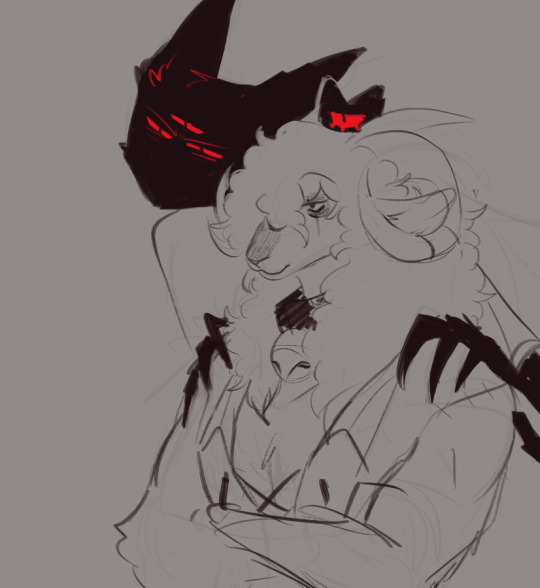
i have terrible news they'd look the exact same except now the lamb is balalaika-core ( with a little bit of roberta the maid from black lagoon ) and narinder can officially be given the 'failwife' title
#narilamb#cotl narinder#cotl lamb#admittedly genderbend stuff aint my thang but that's my ' The Gendies ' issue#all that honestly changes is the voices + the lamb's horns are a little more thin#neither of them are cis in their main iteration and neither of them are cis now and i dont know how i'd draw that without feeling WEIRD.#edit: pointed out to me their love is in the yuri way ANYWAY
525 notes
·
View notes
Text
Jacoban Fundies Playthrough: The Faith
My fundie family’s faith is based on a combination of the Jacoban faith from The Sims Medieval and the Rambunctious Religions mod by Lumpinou (specifically the Worship of the Watcher branch, of course.) It is obviously inspired by blogs like @meetthefundies and @fundielicious-simblr, which are in turn inspired by real life fundamentalist families like the Duggars and the Bateses (and I am definitely taking inspiration from those families, too) but I wanted it to be more based on Sims lore than directly on real life. Therefore there are going to be some differences in their theologies, so I wanted to go ahead and outline those, both in case anyone is interested and just so that I can get my own thoughts organized.
The basic cause of the Jacoban revival is that they feel that sims have drifted too far from the Watcher, as seen by things like scandalous relationships outside of marriage, a rise in Mean and Mischief interactions, and above all the rise of Occults. The Jacobans’ mission is to behave in such a way as to adhere to what they feel is the Watchers’ original design for sims to live (and to make everyone around them do the same, of course.) Their main issue with Occults such as Spellcasters (and now Mediums, though it’s not entirely the same thing) is that they feel that they are seeking power for themselves that should only belong to the Watcher, and their issue with Vampires is that they feel that they are predators, basically demons, etc etc. (I think they struggle with Aliens, since they have to assume that Aliens are created by the Watcher but the way that Aliens differ from them makes them uncomfortable, so I figure they just try not to acknowledge them so that they don’t have to think about them too much.)
I figure that there is something of a hierarchy in the Jacoban community, in that the original families who brought it back will be my equivalent of “fundie royalty”. I’d also like to tie in the sim equivalents of real life fundie programs and organizations, like how fundielicious-simblr has the CFLL Family Bible Camp.
Since the Sims franchise has always been notably inclusive and I feel like every iteration of it has more or less had gender equality (even in the Sims Medieval, everything I’ve ever seen about it seems to point to the fact that all sims could hold all jobs rather than any of them being specifically for male coded sims), I felt like having my fundies discriminate against queer sims wouldn’t make sense. So it is entirely possible for there to be accepted queer sims and relationships in the families. (Yay?) That doesn’t make for an accepting group, though--they would still want to make sure that any sims who marry into their families are Religious Enough, so Peterans (who I figure are pretty much the equivalent of “standard” Christians) and certainly all other faith branches need not apply.
I realize that in light of this it really wouldn’t make sense for me to go the sister-moms/woman’s role is in the home/etc etc route.... and yet it’s such a key element to the fundie family structure that I’m going to do it anyway. ;;;;; I think my workaround is going to be that their view is that before sim women are married, and after their children are grown, they are permitted to have Watcher-honoring jobs and community roles, but in the Season Of Life where they are Producing Arrows For Their Quivers it is seen as The Watcher’s Design for them to be the ones at home with said Arrows. (I’m thinking that rather than making this a strictly cis female sim thing, it would apply to any sim that can give birth? If there’s a better way for me to handle that, please let me know. All thoughts are welcome.)
Another issue I’m not going to bring into this is abortion--since it doesn’t exist in my game (neither do miscarriages, since that’s just Too Real for me) my sims aren’t going to protest that. (But don’t worry, they’ll still be able to pontificate about the evils of birth control, since I have that in my game!) I figure that their rallying political cause will instead be the Foundation For Less Mischief.
If there are any other things I should think about, tie in, or elaborate on, please let me know!
7 notes
·
View notes
Text
FINN LAFFERTY.

FULL NAME: Finn Eoin Lafferty
FACE CLAIM: Ben Rosenfield
BIRTHDAY: January 1, 1996
GENDER & PRONOUNS: Cis male & he / him
ORIENTATION: Homosexual
RESIDENCE: Oxford, England
STATUS: Secondary; Available
BIO & VERSES UNDER THE CUT. Trigger warning for child abandonment.
In the early hours of New Year’s Day, 1996, Antoinette Lafferty stumbled out of The Village Inn in Ballinasloe, Co. Galway, after sinking one too many pints in the run up to midnight. She stood outside for a couple of minutes, then decided to take a walk up the lane in an attempt to clear her head. When she reached the gate of the old churchyard, some way down, she paused and stood there with her elbows propped up on the wooden posts. Wind stirred the leaves that made up the hedgerows on either side of the road. The storm of the previous night had abated somewhat, but it was still snowing, small white flakes drifting down from the leaden sky. The bells in the chapel over the hill tolled the hour—2 a.m.—and she imagined the nuns shuffling from their cells, through the draughty halls for Matins. When the sound faded away, the lanes were peaceful for a moment, and then Antoinette was surprised to hear a baby crying close by.
At first, she thought she was imagining it—was it the breeze, had she had simply had too much to drink? But no, there it was again. She’d know that sound anywhere, because she had two boys of her own at home, Daniel, who was four and loved dinosaurs, and Sean, who was not yet nine months old and still got her up two or three times a night. Poor lad was teething. Their grandparents were looking after both of them tonight, God bless and help them.
When the wail came again, she did not hesitate; she fumbled with the latch with numb fingers, then she was hurrying up the path and in between the graves, trying to find the child who was in such evident distress. Suddenly, Antoinette was very, very sober.
Wrapped in a thin blanket that was no match for the elements ( the snow was falling thicker and faster again now ) was a tiny boy whose eyes and nose were scrunched up tight against a mouth that was wide open and lungs that were screaming. How long had he been out here? Antoinette struggled out of her coat and wrapped him gently in it, careful to support his head and neck with his elbow. It couldn’t have been very long; he looked minutes, not even hours, old. There was still blood matted in his downy hair. Where was his mother? If she had had him here, just now, she couldn’t have got very far. She must be in a lot of pain, and very scared.
“Hello?” She shushed the baby, tried to comfort him as she searched. “Hello?” But there was nobody there. Conscious that she needed to get the baby out of the cold, fed, and into bed, she took him back to The Village Inn down the lane.
She called police and the local doctor ( the nearest hospital was more than an hour away and neither she, nor her husband, Adrian, were in any fit state to drive ) from the telephone from behind the bar, and not long later, the latter pronounced the boy healthy, aside from a slight wheeze in his chest that they would need to keep an eye on, but the former were never able to trace his mother.
The Laffertys fostered him while they conducted their investigation, then formally adopted him six months after its conclusion. They had him christened “Finn Eoin” and he fitted right into their family; Antoinette doted on him, Adrian too, and Daniel and Sean loved playing the role of big brother to him.
Finn was a quiet but intelligent child, inquisitive, interested in the way things worked, and always asking, “but why?” He took radio sets apart and rebuilt them, spent hours building complex structures out of Lego and Meccano. In later life, in his late teens, this curiosity takes him to Trinity College, Cambridge, where he studies Maths and Physics under the tutelage of Professor James Moriarty (@diabolicaltendencies), who, unbeknownst to Finn, is his biological father. Jim never reveals the extent of their true relationship ( although he has been aware of Finn’s existence for over ten years, and even, on one occasion, visited the Lafferty home when his son was out at school ), but nevertheless, he takes a special interest in the boy’s education. Finn takes a position as his research assistant in his third year at Trinity, and it’s thanks to Jim’s mentorship, not to mention the glowing reference that he provides as part of his application, that Finn is offered a place at Oriel College, Oxford, to study for his MSc in Mathematical and Theoretical Physics.
As of 2021, Finn is a second year PhD student in Mathematical and Theoretical Physics, again at Oriel College, Oxford. He lives in a shared house outside of college with fellow PhD candidates, Jakub, Sunita, and Eleanor, and his two rescue cats, Erwin and Minnie. When he’s not in the lab, the library, or studying at home, Finn enjoys stargazing and watching foreign language films with the aid of subtitles. He is currently learning Italian through a combination of evening classes and Duolingo.
VERSES.
EVERYBODY WANTS TO RULE THE WORLD. | ALT. MAIN
( i. ) Kate leaves for England with Jim (@diabolicaltendencies) as planned. Finn is raised by his biological parents. Otherwise, his life follows much the same pattern as above.
( ii. ) Kate leaves for England as planned, but with my Jim, instead of Gold’s. In this iteration of the verse, Finn and Xan are fostered by Tobias Bellamy (@omniishambles). This is only meant to be a temporary arrangement, while Jim and Kate got the network up and running, but one year turned into two, and two into five, and after the Fall, which takes place c. 2012, when the twins are sixteen, it was made official. Unlike Xan, who mourned the loss of their father very openly, Finn, who had been calling Toby “Dad” for years, was privately relieved.
YOU SHOULD SEE ME IN A CROWN. | FANTASY AU
Finn is born to the King and Queen of Dorchadas in the first year of the war. He is spirited away by agents of King Augustus of Sarahas when he is only a few days old and grows up a ward of the crown in the south. When he returns to Dorchadas, escorted by August (@diabolicaltendencies), Bucky & the Witch Bros (@epiitaphs & @gunmetalgrey), he is in his teens and the war is over. He eschews the castle in favour of the forest dwelling inhabited by his paternal uncle, Richard (@strangerinourmidst). His mother’s people were nomads, druids, healers, who were driven out of Llandyr after the death of Queen Mary and persecuted by King Augustus when they crossed the border into Sarahas on their way to Jiaodao in the east. When Finn reaches adulthood, he founds a new tribe, and despite having no magical abilities of his own, save for being resistant to the magic of others, he leads his followers nobly and benevolently many years, listening to their divinations.
THE SUN WILL COME SHINING THROUGH. | HAPPY VERSE (MUSICIANS)
Finn is the son of Katherine Conway, a lawyer, and her husband, Richard (@strangerinourmidst), a chef and author. They married young, when they were both only twenty, after Kate discovered she was pregnant with Richard’s brother’s child. N.B. In this verse, Finn and Xan are not twins; Finn is born five years later, when the marriage made out of desperation turns to true love. Kate goes into labour in the middle of a trial, but only makes her way to the hospital after she gets the defendant acquitted. Her son arrives six hours later, and is named “Finnegan”, by his father.
#child abandonment / tw#finn. | muse#happy birthday finn!#( ii. finn | visage )#( ii. finn | hc )#( ix. antoinette lafferty )#icon (c) twahsicons
7 notes
·
View notes
Note
Hello! I'm pretty sure I saw you mention a while ago that you were disappointed by confessions of the fox, would you mind explaining why? I've seen mostly good things about it myself. If I misremembered then I'm sorry and I hope you have a good day :))
I think this is one of my less popular opinions. And I understand - we so rarely get historical fiction with trans folk as the titular character (indeed, we rarely get any fiction what that). So I get people’s desire to laud it.
For me though? It fundamentally didn’t work as a book. As a story.
Let me count the ways. (Apologies in advance for the length of this.)
First: If you’re trans-ing someone who was historically cis instead of seeking to find a real, historical trans or gender-nonconforming person, I have questions.
Most of the questions can be summed up as: Why?
I struggle with historical fiction that takes a cis person and re-imagines them as trans as if there aren’t already literal historical, real trans people out there whose stories can be told. It smacks as (unintended, well meaning) erasure of lived experiences.
Jack Sheppard, to the best of our knowledge, was a cis dude. There were trans folk in London in the 1710s and ‘20s. You might have to dig a bit for them, but they’re there. Because trans folk have always been there.
Second: Characterisation
This is more personal taste, but I found Jack and his girlfriend Bess to be inexcusably boring. How a trans, thief and gaolbreaker in 1720s gin-soaked London can be written as boring is anyone’s guess. But he was.
Jack had no real personality and I found his story to be uninteresting. Oh, he’s the world’s best thief and gaolbreaker, that’s nice. But on its own it isn’t enough.
He had few to no faults. Childhood trauma isn’t a personality. Nor is being trans. And the author relies heavily on gender + occupation (thief-ness) to equal personality. So it falls very flat.
Bess, his girlfriend, is a mixed-race sex worker from the Fens (even though actual real-Bess was from Edgeware). She seems to only exist to demonstrate that Jack is good at sex. She also veers a little into the Mystical Woman of Colour Healer Who Aids The White Person on their Journey of Self Discovery trope.
Neither Bess nor Jack undergo any real change in the book. They exist in a weird stasis and experience no development, despite living through some harrowing things. They’re wooden dolls who move through the story without really engaging with, or being influenced by, the things around them.
The other “main” character is a modern Academic who “found” this supposed “manuscript” of Jack’s life and is annotating it. His story unfolds in the foot notes and it’s just so messy if not a bit contrived. It didn’t make sense. I think the author was trying to convey that the Academic was in a sort of dystopian future, but if that’s the case it didn’t work. And if that’s not the case, the entire inclusion of the Academic’s story served only to annoy and take me out of the reading experience.
E.g. There’s a scene where the Academic is being taken to task by the Dean for playing stupid games on his phone during office hours and like honey, lapsed-historian/academic here, trust me the Dean doesn’t give a fuck what you do during your office hours so long as you’re in your office and students can come bother you about their poor marks.
The manuscript is supposedly being sought after by this pharmaceutical company for nefarious reasons that never struck me as being entirely realistic/believable. Also, the university was spying on this non-tenured, slightly useless Academic as if he somehow mattered? Which made zero sense. Anyway, it was stupid and should have been ripped out of the final version. OR changed substantially.
Jonathan Wild, the thief taker (main antagonist to Jack), is probably the only interesting person.
Third: Lack of Follow Through, or, the Fabulism Was Not Used Well
The book tries to blend in some fabulism to the world by giving Jack the ability to “hear” the thoughts of inanimate objects. This could have been fun and gone to some interesting places, but it failed to deliver.
I personally found the shoe-horning in of “capitalism commodifies everything” to be sloppy and heavy handed. It was done with little grace and didn’t sit right given that we are dealing with the early modern period. Yes, you can use the past to critique our modern woes, but do it intelligently. Don’t slap modern points of view and understandings of things onto the past and expect them to make sense.
Anyway, Jack spends the book hearing inanimate objects talk to him, asking him to “free” them, or something. And uh .. .it doesn’t go anywhere interesting after that.
Also the correlation one can draw from these objects to, you know, slaves, is uncomfortable. Especially as it’s the cargo of the EIC ships that Jack hears. I don’t think it’s intended in any sort of malicious way, but the allusion is there and I always found it to be distinctly uncomfortable.
Fourth: Misuse of Marxist Theory, or, More Heavy Handed Moralizing that Annoyed the Dear Reader because it wasn’t subtle and, more importantly, it wasn’t done intelligently.
So, the author is an academic - studies 18th century lit. Which is readily apparent as his Academic (self-insert) character is, I believe, supposed to be a historian and uh ... you can tell that the author doesn’t know enough to wing that. E.g. How he interprets some of the laws and customs of the time. Instead of understanding the social, economic and, most importantly, environmental issues that gave birth to laws like “the corporation of the city of London owns the streets so you can’t muckrake” he chooses to understand them through a very 21st century lens (and a Marxist one at that. I know I’m perhaps a bit uncool for this, but I find the application of Marxist theory to the early modern period to be ... not useful).
Do you know why, mid/late 17th century London passed these municipal laws? Because of the god damn fucking plague you numb nut. You absolute buffoon. It had nothing to do with “oh the City/government is evil and wants to own you” it had to do with the fact that no one cleaned the goddamn street. So the city took over doing it.
Prior to this, in London, you were supposed to keep the street in front of your building clear of waste, debris, refuse etc. No one did this, of course. I live where it’s cold and snows a lot and people can barely shovel the 2 sq ft of sidewalk in front of their driveway in the winter. I dread the idea of an average homeowner being expected to keep the street clear and clean.
Anyway, guess what dirty streets attract? Vermin. Guess what comes with vermin? Plague. Guess what happened in 1665/66? The great plague of London!
17th century England might not have understood germ theory, but they did understand correlation. (Also, the population of London was doubling at the back half of the 17th century and streets needed to be reliably cleared for through-traffic reasons etc. etc.)
ugh, sorry, that one in particular drove me up the wall. Not everything is a capitalist conspiracy. Especially when we’re talking about municipal by-laws from the 17th century.
And I understand the temptation to read a lot of modern interpretation of words like “corporation” and “company” onto bodies that used these same words in 17th and 18th centuries. But the weight, meaning and connotation of “the worshipful company of merchant adventurers” is different from, I don’t know, “the tech company google” or whatever. The early 18th century is when we start seeing the birth of the stock market, of “venture companies” (i.e. merchant adventure companies), of a lot of the language and proto-iterations of what will grow to be economic institutions of our time. But it doesn’t mean they’re the same and that difference is important. Because Jack Sheppard is a man living in 1720 he’s not going to be having our modern 21st century critiques of capitalism because his engagement with the economic systems of his time would have been radically different to our own experiences.
Fifth: Unbelievable Top Surgery & Recovery
So, Jack gets top surgery. In 1720s fever-ridden London. While quarantining in a brothel.
And he lived! No infection! No tearing! He was up and about in a matter of days. I don’t remember if his nipples survived the operation or not but somehow Jack did. Without anesthetics! Or you know, any concept of hygiene.
His Mystical Girlfriend Who Exists to Show How Good Jack is at Sex is also somehow Magically Very Literate and also Magically a Surgeon? and performs this surgery on Jack in the middle of a plague.
The entire ordeal was so poorly handled in terms of believability that I literally set the book down and said “what the fucking fuck” to the empty room then drank wine before finishing the chapter.
An aside, it is funny thinking about the quarantine chapters at this point. I read COTF when it first came out a few years ago. Sweet summer children, we none of us had any idea how to write quarantine scenes.
That reminds me: the entire quarantine thing was presented as the government trying to control movement and take away people’s rights etc. instead of a very normal, typical response that cities had been enacting since 1350. Samuel Pepys, who lived through the 1665/66 epidemic, barely even notes the restrictions. He’s like just “hmmm I’d love to go to the pub but I also don’t want to die. so. *shrug*”
At the time of the author’s writing, most of us in the western world had no idea how normal and day-to-day disease was for our ancestors and yes, sometimes there would be crackdowns to try and curb it if an epidemic hit. That was part and parcel of life. So again, Jack and Bess wouldn’t be like “ooooh we’re 21st century slightly libertarian lefitsts who think the government is doing this to control us and for nefarious purposes”. Much more likely, they would have been like Pepys and viewed it as nuisance, albeit a necessary one.
Sixth: Overall Lack of Realism
I think I’ve noted the big moments where I was like “no one in the early 18th century would think that I’m pretty certain”. This isn’t to say people didn’t grouse, complain about London government (and the king etc.), critique or question the world they lived in. They absolutely did! Regularly. With great verve and gusto, if the broadsheets are anything to go by. But their critiques, their complaints, suggestions for bettering life, are not the same as ours. Because how could they be? They lived in a different world, were responding to specific things, grew up hearing and believing certain things etc.
Jack, aside from having minimal to no character, really did read like a modern slightly-libertarian leftist who was plunked into a novel that takes place three hundred years ago.
In addition to unrealistic political views, his understanding of body, gender, sexuality and identity also read as incredibly modern. Now this is harder, because we have so few extant sources from that time on those who lived non-gender conforming lives, and from their point of view, so yes creative imagining and interpretation is the rule of the day for writing that.
But, we do know how in general the average person engaged and understood gender and sexuality and that would, naturally, inform anyone whose experience was different. And that base line of “probably what a typical cis Englishman or woman felt about their body and identity” wasn’t present. At all.
Indeed, gender engagement at that time was interesting. The concept of the body, the role of the physical body, how it was interpreted is absolutely fascinating and the author could have done some really cool things with that. But he didn’t. He went for slapping a modern interpretation onto the past.
At this point, write a dystopian novel and make Jack a fictional character. That probably would have gone over better, for me at least. The conceit can remain the same: It’s the year 4056 and an Academic found a manuscript from the year 3045 when the Dystopia Was a Thing - and go from there.
---
I think part of what made this very popular and why people seem so taken with it is that it reads smart. It reads like someone who has immersed themselves in that world etc. because of the slang and language used.
Yet, for me, as someone who has studied this period extensively, especially queerness in London in the late 17th and early 18th centuries, it read flat and unrealistic.
I was initially very enthused when I started it. There are some posts to that effect on my blog. But it very quickly went south. It tries very hard to be Radical and Smart and Subversive and Critiquing Everything and so I think it fails at the fundamental thing it should be doing: telling a good story.
(Note: The book does try and address racism in London at this time. It also felt a bit forced. And Jack seemed to have no prejudices or preconceived notions about Indian and Black folk which isn’t realistic. Like, it might make him #Problematic but my dude, you’re writing a man born in 1702. He’s going to have some iffy views. That can be challenged! Absolutely. But they still would have existed.)
---
Thank you for the ask! I again apologize for the length of the reply.
26 notes
·
View notes
Text
Fantastic 4 2099 #1 Thoughts

Again, I ask, who is this for???????????????????
Let’s put aside for a moment how the cover poorly reflects upon the story, both in terms of what the story will be about and even how most of the characters in question look.
The premise of this book is that HERBIE on the orders of his mother is seeking out his ‘family’, which we’re supposed to interpret as meaning the F4 obviously. But the actual protagonist of this title is in fact a new version o Venture.
Venture was arguably the very first super villain of the 2099 line. A cyborg cowboy bounty hunter sent by Alchemax to track down Miguel O’Hara not long after he first got his powers.
The new rebooted Venture is a decidedly nicer cyborg cowgirl (cowwoman? Cowwoman?) bounty hunter who is helping HERBIE find his ‘family’ after HERBIE promised her something ‘better than money’ back in 2099 Alpha.
What that was we don’t know, if it was anything at all. It seems like Venture sort of took this weird outdated little robot on faith when it said it had something better than money. Which at best leans against the impression she’s clearly intended to give off in this issue and 2099 Alpha, and at worst makes her look like an idiot.
I will talk briefly regarding the mere fact Venture got a reboot like this.
It’s a double edged sword.
On the one hand nostalgic fans like me are unlikely to take to this character because we prefer and are more invested in the original Venture, who is also one of the more stand out 2099 villains in general. On the other hand if you HAVE to reboot this line then at least it is something decidedly different. Venture has a different personality, a different gender even a different (albeit more stereotypical) speech pattern.
The wider problem isn’t so much with Venture as a character (though a bounty hunter out of a futuristic Western in a Disney product shortly after the Mandalorian TV show debuts, what a coincidence) but rather her placement in the story.
Why on Earth would you launch a comic book about a futuristic version of the Fantastic 4 and make the main character anyone who isn’t the F4!
It’s like if the original F4 were introduced through following our protagonist Willie Lumpkin!
The personalities of the F4 themselves are fairly bland though I will say this.
Karla Pacheco does a great job applying the ‘methodology’ behind the 2099 reimaginings of the other Marvel characters to the F4.
This is in fact (to my knowledge) the very first time there has ever been a true blue (no pun intended) 2099 spin on Marvel’s first family. Though there was a Fantastic 4 2099 back in the 1990s it merely starred that universe’s versions of the original team.
Whilst I do believe Peter David could’ve come up with something better, Pacheco here essentially swaps and remixes traits from the original F4 in a way which on paper could’ve made for a compelling team.
Instead of 3 men and an Invisible Girl, we’ve got 3 women and an Invisible Boy, who’s abilities are mostly used for thievery and smaller scale stuff like that. It fits well in the barbaric environment of the Thorites encampment.
Instead of a hotheaded youth as the Human Torch, we have an adult woman...now let’s get a little controversial. If I’m not mistaken the woman in question was Hispanic/Latin American (I don’t know the difference sorry, not American) so that probably does play into a negative stereotype. But she’s also a mechanic (like Johnny used to be), and also kind of the rouch street level brawler type (like Ben tends to be) and also the person in a romantic relationship (like Reed/Sue). What spices this up too is that she’s not in a relationship with anyone actually on the team. I guess that makes her a little like Ben, with her wife the equivalent of Alicia Masters. But I still think it’s more of a remix of Reed and Sue because no one else on the team is romantically involved with anyone else.
Instead of an inventor who happens to also be able to stretch, we’ve got an inventor who uses her inventions to mimic stretchy powers among other things. It’s essentially taking Reed’s real strength as a character, his brain, and making it directly the result of his super powers themselves. A consolidation if you will.
Finally instead of a monsters looking craggy rock creature who’s feared by some people and regards themselves as ugly, we have a beautiful diamond creature who’s regarded as a freak due to her parentage, not what she looks like exactly. She’s even referred to as a golem, which is clearly the inspiration for the Thing too. She’s also the youngster (which makes her like Johnny but I’d also argue like Franklin or Valeria too) and she has a direct blood relationship with one of the four (like Sue and Johnny) but a parent/child relationship not a older sibling/younger sibling dynamic.
Also most of the characters are poc and/or queer and/or children of same sex relationships, or at least relationships different to a cis man and a cis woman hooking up.
Neither I, nor do I think the author, are trying to float some kind of weird ass message about heterosexual relationships or white people becoming a thing of the past (though there are weirdos who do claim such things). But if stats are to be believed such people and such relationships are undeniably going to become more common in the future. Thus the traditional nuclear family, whilst unlikely to ever truly disappear, is nevertheless not going to become the default state of family units.
But the concept was let down by the execution.
First of all we see the F4 briefly in action (with Venture, again our protagonist) nowhere in sight) at the very start of the comic. Then we begin the laborious task of going to each member to establish them as people and finally get right back to the action scene at the start of the story.
Sometimes this structure works, but not when we’re literally following a whole other character, and not when we’re gradually unveiling each character’s abilities and looks, it just turns the comic into a chore.
It is particularly a chore considering that Pacheco seemed to overuse characters saying ‘Ha’.
But possibly the absolute worst thing about this story was the ending.
So as it turns out HERBIE has a few screws loose and this whole time he hasn’t actually been searching for his family, but rather trying to recreate it by recreating the F4.
He’s been exposing random people to cosmic rays of his own design and whenever it invariably doesn’t work, changing the rays and trying again. Sometimes the rays just murder and mutate his targets, sometimes they do manage to get together but then something goes wrong and they die.
This is what happened to 3/4 of our new F4 2099, when they get close enough they contort and die in horrible ways.
HERBIE is then so angry about failing once again he unleashes his weapons on Venture and Invisible Boy.
Basically HERBIE is a FUCKING PSYCHOPATH!
Which isn’t an unamusing premise, nor even an unamusing twist in concept.
But again in execution (no pun intended) it’s awful because not only did we soldier our way through this chore of a comic book that wasn’t even following the F4 themselves, but when we FINALLY unite the team and FINALLY deliver an F4 for the 2099 universe...we immediately kill them...and even the character we were following just in case you might’ve liked her even a little.
So the whole comic is fucking pointless.
Exempting Conan 2099, this was the ONE title that might’ve really appealed to older 2099 fans as there was an untapped niche in the pre-existing iterations of the 2099 universe for the F4 to fill. It was one of the few instances in which this event wouldn’t have to compete too much (if at all) with the older iteration of the 2099 universe and where something new and different didn’t have to come at the expense of something old and beloved.
But instead we got $5 worth of our time wasted.
And that applies to hypothetical NEW fans too. This is an issue #1 so if anyone had been inclined to check out this title or if this was introducing them to the 2099 line as a whole they got royally screwed because there is literally no story left to go after this.
So I ask again of this whole event.
Who.
Is.
This.
For?
Don’t read this trash.
13 notes
·
View notes
Text
The Top 25 Films of 2019

25: Shadow (dir. Zhang Yimou)
"Without the real, there can be no shadow. A principle no one's understood."
After a string of terrible films trying to play to Hollywood audiences, Zhang Yimou manages to successfully return to the goldmine he stuck in the early 2000s and craft another absolutely gorgeous wuxia. Here he swaps out the poetic, colorful beauty in favor of monochromatic, surprisingly violent tone poem about deceit. It ultimately works against it, as by the seventh or eighth double cross you kind of just give up trying to figure out who's on what side, but the main action setpiece is so wonderful it deserves a spot for that alone. Hopefully a good sign for Yimou's future, as long as we don't have another nationalist war epic that somehow inexplicably also has a white savior narrative too.
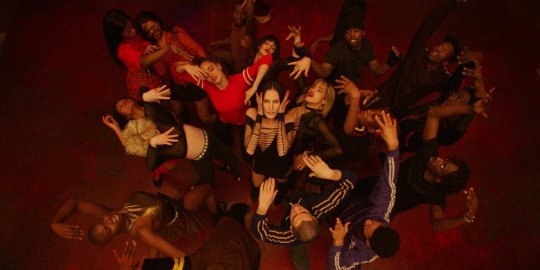
24: Climax (dir. Gaspar Noé)
"...something's kicking in..."
Noe takes us for another plunge into the dark, twisted, vomit-inducing, neon-lit hellscape that is his mind and at least has the common courtesy to put the pleasant parts upfront this time. While it will eventually devolve into the same type of chaos that we all love/hate from him, the first act is kind of a wonderful departure from him. He basically accidently makes a musical for a while, with wonderful and deeply intricate dance choreography as well as a fantastic extended sequence where every character jumps in and out of frame and gets a chance to strut their stuff. That movie would have been a strong top five contender, but alas, the man has his particular quirks that he must abide by. But at least he also strung together probably the best soundtrack and sound design of the year, with the fantastic EDM bangers rumbling through the walls throughout the entirety of the film.
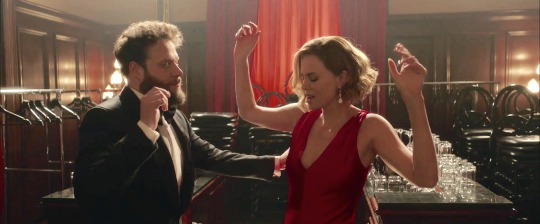
23: Long Shot (dir. Jonathon Levine)
"Oohhh boooy!"
Charlize Theron and Seth Rogen doing a political comedy that manages to be both smart and extremely funny seems like a long shot indeed, but Johnathon Levine finally strikes gold again after a number of disappointing duds. He manages to make a pretty good story about how navigating the political minefield destroys what little hope and dreams high level politicians still manage to have, but then he also happens to make it all absolutely hilarious too. Theron demonstrates a surprisingly strong comic game too, easily matching all the other talent and cracking jokes along with them. It ends up being a charming romance where the woman takes charge in a very pleasant change of pace. And if nothing else, the way Seth Rogen yells "oh boy" in that video is always going to make me laugh no matter what.

22: 6 Underground (dir. Michael Bay)
"Ghosts have one power above all others: to haunt the living. Haunt them... for what they've done."
Theoretical question: what say Netflix gave Michael Bay a blank check and no restrictions, and he turned in the most overblown, dialed to eleven, nonsensical spectacle that he ever crafted and was allowed to put it into almost every American home for free? Now what if I told you that it was actually kind of awesome? Sure, it's basically a child playing with his $150 million dollar GI Joe set, smashing his toys together and making pew-pew sounds, but it's also probably the best testament to the power of conventional effects work over the increasing insistence on CGI for big setpieces. Let's face it: explosions are pretty cool, every one likes exotic locales and bright sports cars, and there's at least someone here to appeal to you (least surprisingly for me, it was Melanie Laurent with bangs wearing a suit). It almost reaches a late Michael Mann kind of abstraction, as both are respectively breaking apart the action movie into stranger combinations. Bay gives plot only because he contractually has to, and even then doesn't seem as committed to characterization as he is showcasing surprisingly brutal ways for the gang to dispatch their enemies. It's nonsense, but the damn best nonsense of the year.
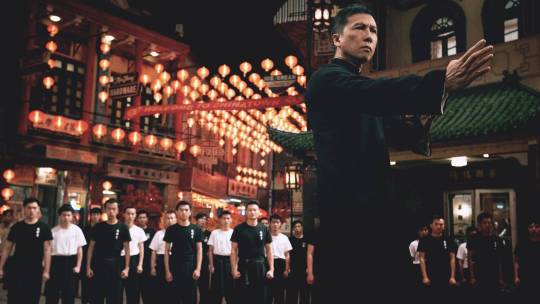
21: Ip Man 4: The Finale (dir. Wilson Yip)
"Is that it?! Is this your Chinese Kung Fu?!"
The finale in the decade-long quadrilogy of supremely silly and borderline racist worship of China finally attempts to tackle America to delightfully amusing results. Scott Adkins doing his best evil R. Lee Ermey impression while slipping in modern neo-con punchlines, neverending Bruce Lee worship, and more nationalism and bad fake American accents than you could ever believe. Yet also a more bizarrely honest portrayal of racism in 1960s America than most movies would ever have the courage to acknowledge. It’s almost fascinating considering how a lot of the non-Asian racism basically serves as set dressing, but they still put more effort there than pretty much every Hollywood movie set in the 60s that isn’t directly about civil rights. But ultimately they're selling you a bill of goods saying "watch Ip Man beat the crap out of racist meatheads" and you better believe they're going to give you what you want.
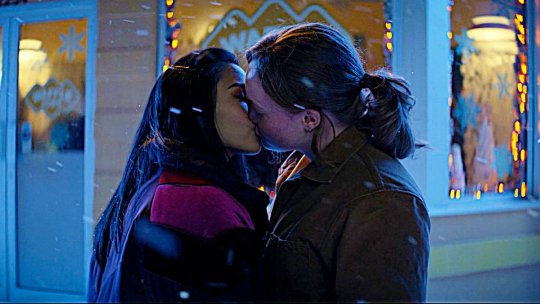
20: Let It Snow (dir. Luke Snellin)
"Have you ever been with someone, and you stay up until like 4AM just talking about everything, and you're just like, I can't believe I get to exist at the same time as you?"
Okay, so let me explain myself on this one:
So yeah, it certainly is a generic teen romcom where everyone plays into basic teenage stereotypes, half the cast is clearly nowhere near eighteen, and all of the romance is oddly chaste. But there truly is something to be said about representation in a romcom, and after a thousand boring cis, straight, hetero couples falling in love for decades, this movie actually managed to hit a lot of notes that are at best rarely explored in the genre and also manages to probably sneak in some genuine firsts. While both the "tomboy/softboy" and "Latina struggling with her family" storylines have been done before, these are some nice, cute little iterations on those befitting a teen-friendly movie. But the Dorrie/Kerry story is not only legitimately groundbreaking, but also an absolutely perfect encapsulation of the types of problems that queer teenagers struggle with during that time of their lives. It's a queer romance, played by two actually not-straight people, with one of them being a nonbinary actor too. And it's not cordoned off into some bargain bin DIY indie that fell out the back of the truck on the way to an indie film festival; no, this is in a major holiday release, with well-known actors, and as one of the central storylines! Plus, it perfectly captures the woes of modern teen coming out, knowing that everything will probably still be cool, but the fear haunting you as all you can do is look jealously at someone who is out and proud. And it does it without being real shitty and horribly traumatic too. Eat your fucking heart out, Love, Simon!

19. John Wick: Chapter 3 -- Parabellum (dir. Chad Stahelski)
"Si vis pacem, para bellum!"
Another year, another John Wick movie. There's more plot; you don't care, and let's be honest, neither do I. Stahelski is here to serve up more badass characters and incredible action, and no one in Hollywood does it quite like him. It's got familiar action favorites demonstrating why they still remain supreme, with Yayan Ruhian, Cecep Arif Rahman, Tiger Chen, and the ever underrated Mark Dascascos. It's got surprising action showcases for Halle Berry, Lance Reddick, and somehow Boban Marjanović. It's got great character actors doing their thing, from the returning McShane and Fishburne to newcomers Saïd Taghmaoui and Anjelica Huston. It's got Asia Kate Dillon as an awesome nonbinary shadow organization asshole. It has a bewildering Jason Mantzoukas cameo. And above all else, it has Keanu Reeves, still demonstrating not only his incredible physical skill, but also how to perfectly utilize his particular acting style to create an iconic character.
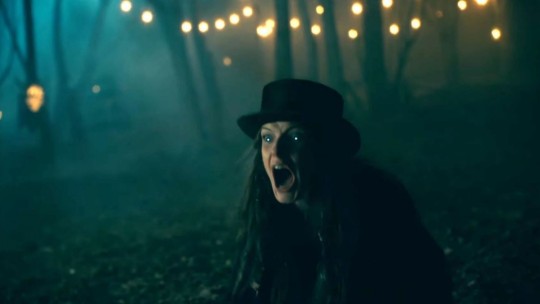
18. Doctor Sleep (dir. Mike Flanagan)
"Man takes a drink. A drink takes the drink. And then the drink takes a man."
While not the most accurate adaption, it might be the only Stephen King adaptation that comes to mind that actually successfully channels what makes him such an appealing author. King's stories have an inherent corniness to them and for as much as you unsuccessfully try to cover that up (look to this year's The Outsider for a good example), it's where the true charm of his work shines. It's what makes this so fun, because as much as an epic, eldritch terror is exciting, it still doesn't have the goofy fun of a bunch of vampiric bohemian drifters led by a Stevie Knicks knockoff in a top hat breathing up souls. Plus, the epic three hour runtime actually allows Flanagan to at least try to cover all the more subtle serious characterizations of Danny Torrance, from his recurring alcoholism to him seeking closure with regards to his parents. It manages to actually make the final act's nostalgia play kind of work, or at the very least get the terrible memory of the Ready Player One version out of my head.
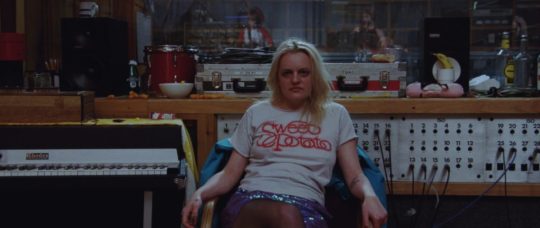
17. Her Smell (dir. Alex Ross Perry)
"I thought you were better than this, but deep down I knew you weren't."
Perry must have had some extra pent-up nastiness in him after having to restrain himself while writing Christopher Robin (by the way, that happened), because he really created one of the nastiest characters in cinema here. Her Smell is the equivalent of being locked in a room with the shittiest person you'll ever meet, as she constant lashes out at everyone and everything with the kind of delirium that the truly demented are cursed with. And credit to Elizabeth Moss where it's due: she really perfectly embodies such a horrible human being and proceeds beat you damn near to death with it during a majority of the runtime. Eventually it slows down and all of the problems become apparent once they script isn't flying by at a thousand words a minute. But Moss literally did her job so well that people fucking hate this movie because of her character, and if that isn't a testament to her acting talent than I don't know what is.
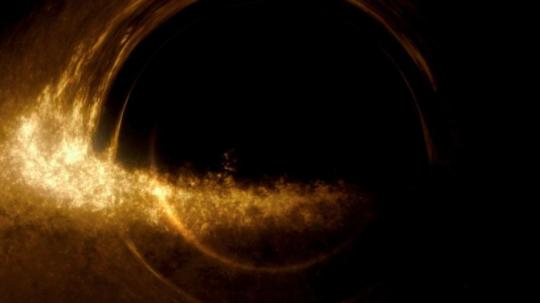
16. High Life (dir. Claire Denis)
"At 99% the speed of light, the entire sky converged before our eyes. This sensation, moving backwards even though we're moving forwards, getting further from what's getting nearer. Sometimes I just can't stand it."
Denis finally makes her English debut with what she does best: nauseatingly uncomfortable sexuality oozing from terrible people doing horrible things. In this case, she takes an innovative detour into sci-fi, setting up a decades-long story of human experimentation, murder, the horrors of space travel, and whatever unholy things are going on inside of the "Fuck Box". It has an appropriately dingy production design too; the clean retro-futurist spaceship design soon dissolves into a torn apart den of depravity, caked in a mixture of filth and dry blood. Pattinson once again manages to be likeable while also being extremely standoff-ish; only playing with his baby daughter do we seem to see him actually enjoy interacting with a human being. Kind of gets lost in the sauce near the end, but at least manages to land some surprising emotional notes considering the kind of horrors that they've shown up until then.
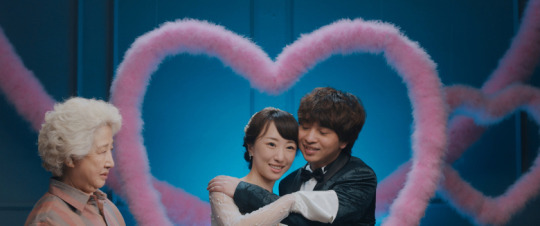
15. The Farewell (dir. Lulu Wang)
"Chinese people have saying: when people get cancer they die. It's not cancer that kills them, it's the fear."
Lulu Wang's followup to Posthumous is such a massive step up in talent it's not even funny. She manages to make such a wonderfully soulful and loving movie about impending death by utilizing near perfect comic timing to defuse a situation that threatens to stray too dark. Not to mention her point of view on modern China from a non state-sponsored eye actually captures a much more accurate shot of the country itself. It's almost as if an Edward Yang movie had set itself more modest expectations -- it's pleasant, goes down well, teaches you a couple of things about Chinese culture, and manages to do it all in only a hundred minutes. And Awkwafina manages to hold her own against far more experienced actors, even if you can tell her Mandarin is still a little spotty.
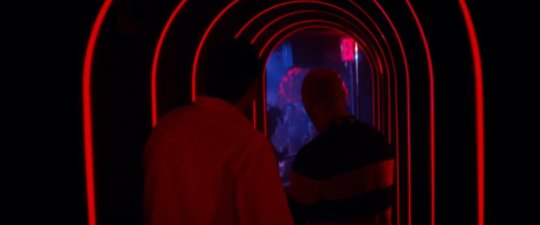
14. Uncut Gems (dir. Josh and Benny Safdie)
"I think you are the most annoying person I have ever met. I hate being with you, I hate looking at you... And if I had my way I would never see you again."
Adam Sandler's magnum opus performance -- there will never be another character that fully embraces every grating aspect of his style of acting and manages to weaponize them for two anxiety-inducing hours of hell. Sandler's Howard Ratner is an absolute sewer rat scumbag, an untrustworthy coward, and a perennial fuck-up of epic proportions. But he's still so charismatic and powerful on screen that you root for him every time he drives you further up the wall. And the Safdie brothers know how to keep him moving too, never letting the audience catch a breath of air for this movie-length panic attack as the odds stack further against Howard each minute. Whenever you see Sandler phoning in his comedies for fat checks, just remember this performance and how pretty much every awards committee completely ignored this film. No wonder he doesn't bother trying anymore.
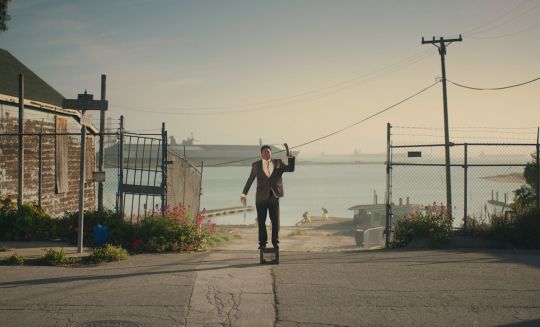
13. The Last Black Man In San Francisco (dir. Joe Talbot)
"You don't get to hate it unless you love it."
A wonderfully evocative love letter to a changing city that is so full of life in every way, from the vibrant movement of the camerawork to the bombastic and powerful soundtrack blasting throughout. But it actually plays more like a New Orleans' funeral march, a melancholic chronicle of the original denizens of San Francisco even as the city warps into the caricature that it's slowly becoming. There is a definite feeling that the aggressive gentrification is unavoidable and even the love of the original quirky denizens can only stave off the metaphorical steamroller that paves over the past. It makes for a wonderful counterpoint to the previous year's Blindspotting: both about young black men dealing with gentrification in the Bay Area, but Blindspotting starts as a very angry comic satire that eventually ends on a note of hope and a will to survive the changing tide, whereas this begins as a joyous celebration of the city and ends on a heartbreaking resignation in the face of everything. Both come from respectively very different sides of San Fran culture, but it's rather interesting seeing each have such different approaches to the same topic.

12. The Standoff at Sparrow Creek (dir. Henry Dunham)
"How do we know it's not you?"
A simple "pressure cooker" scenario done to perfection: one empty warehouse, a bunch of hardened standoff-ish militia men, a missing gun, a ticking clock, and a whole lot of suspicious side eyes and probing questions. It helps that the gruff suspects are a perfect who's who of roughened character actors, all previously well-versed in playing suspicious people, and all of them hiding the kind of unspoken rage that makes a man secretly join an armed militia. All of this told with a nerve-wracking minimalism and style as weirdly detached from reality as some of these men are. One hell of a debut for Henry Dunham and hopefully a sign of good things to come.

11. Booksmart (dir. Olivia Wilde)
"How about we play a *rousing* round of J'ACCUSE!"
Profoundly silly and yet also so disarmingly sweet, Olivia Wilde whips a wildly stylized portrait of Gen Z high-schoolers and the many ways that they vastly differ from their older peers. Certainly much more welcoming and accepting of the diversity of teenagers than pretty much any other teen movies from the past, although they still poke fun at some particular brands of modern "wokeness" too. Stuffed to the brim with wonderfully weird characters, between the lovable catty theatre duo of George and Alan, the cringe-inducing desperate rich kid Jared, the endearingly dumb thirstball Theo, the dorky and blissfully unaware queer-bait Ryan, the effortlessly cool and extremely "top energy" Hope, and the absolutely batshit wildness that is Gigi. But mainly it serves as a vehicle for Devers and Feldstein, with both bouncing perfectly back and forth off each other in moments of comedy and drama. Feldstein always pulls off huge laughs pretty much every line and Devers sells a perfect amount of baby-gay awkwardness in one of the sweetest (and heartbreaking) queer romance stories in film. But above all else, it's just so damn fun and aware of what teenagers are actually like than most movies ever have been.
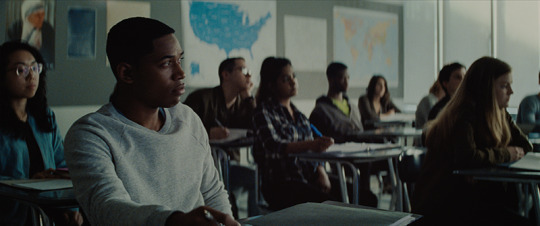
10. Luce (dir. Julius Onah)
*chuckles* "You really think I believe that stuff?"
One of the most wildly uncomfortable experiences in recent cinema history, but not due to any horrifyingly explicit graphic content being shoved in our faces. No, Onah and Lee created something much more discomforting: a constant challenging of all our biases and stereotypes, of us wanting to give chances and have faith in those that we trust. Kelvin Harrison Jr. delivers one of the best acting performances in recent memory because he's able to literally do everything; his Luce somehow manages to perfectly walk the tightrope required for a performance like his. With him behind it, Luce is such a charming, loving, likeable character but there's always just something that seems off about him. And even if Spencer's Wilson has a fixation on him that crosses all sorts of legal and moral boundaries, wouldn't we be cheering her on under different circumstances? In a way, she herself is trying to communicate a lesson about perception too, one that also mires in deep, troubling waters. Even if the film still feels very stage-y due to it's source material, the cold clinical aesthetic only further helps it make us squirm in our seats.
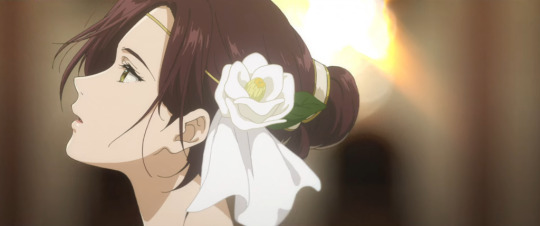
9. Violet Evergarden: Eternity and the Auto Memory Doll (dir. Haruka Fujita)
"Nobody wants a letter that cannot be delivered."
An absolutely magical experience that artistically excels over the original TV series it's based off of. The production is still as impressive as any other KyoAni work, but the composition and lighting in particular are outstanding, selling the social isolation of the first half and the childlike wonder of the second half. Beginning with a sublime Victorian romance in the first half, the story eventually morphs into a tribute to the workers of the world, the cogs in the machine. But in the context of the studio's recent history and the horrific arson attack that claimed 36 members of the studio, this instead comes off as a battlecry against the opposition against them. It's a story valuing those who are overlooked in the process of creation, a story about strong determined women, a story of a young girl defining her own future against society. KyoAni as a studio were most known for treating all their employees exceptionally as well as being a primarily female-led studio, both unfortunate exceptions in the industry as well as the target for a lot of unfair online hatred against them (and surely played some sort of role in why the arson attack happened to them specifically). To see the studio make their first post-attack work so proudly emblematic of what made them unique makes this so much more powerful than you would expect.
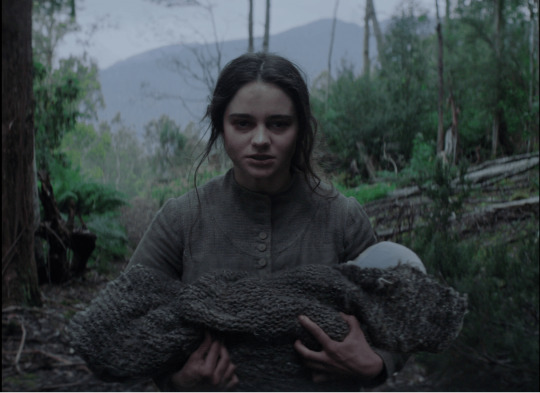
8. The Nightengale (dir. Jennifer Kent)
"You know what it's like to have a white fella take everything that you have, don't ya?"
The classic revenge fantasy narrative warped into a bleak, cynical portrait of racist cruelty in 1800s Tasmania. Jennifer Kent, improving leaps and bounds from the relatively straightforward Babadook, crafts a searing indictment of the foundations of colonialism and the misogynistic undercurrent of the barbarous society. It's a revenge movie where the vengeance is horrible and unsatisfying -- there's no crowd pleasing murderous money-shots, just brief moments of comeuppance in the face of everything in the world working against our two protagonists. Those who are squeamish should be aware that it is exceptionally graphic and grueling at times, although Kent does manage to keep up a very good pace for the two and a half hours of hell.
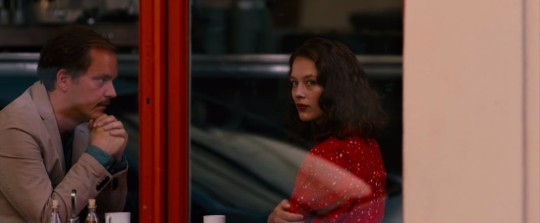
7. Transit (dir. Christian Petzold)
"They say that those who were left never forget. But it's not true. They have the sweet, sad songs. Pity is with them. Those who leave, no one is with them. They have no songs."
Hitchcock by way of Kafka -- a classic existential mystery told in a disorienting separate reality not quite like our own. It's a bold move to take a Holocaust set narrative and completely throw out the actual setting itself, but Petzold only enhances the weird themes of the story by taking it to a completely different but still very familiar time. This is a classic tale of becoming the person you say you are but really aren't -- then begging the question of what if you're not the only one also living a false identity. Buoyed by an excellent and very enigmatic lead performance from Franz Rogowski, who displays a tremendous skill for playing somebody so closed off but also very charismatic and watchable.
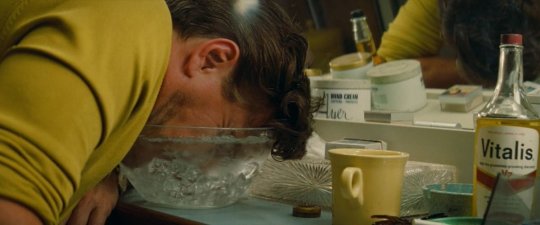
6. Once Upon a Time... in Hollywood (dir. Quentin Tarantino)
"When you come to the end of the line, with a buddy who is more than a brother and a little less than a wife, getting blind drunk together is really the only way to say farewell."
Tarantino trades in his B-movie worship and penchant for comical bloodbaths (well, for the most part) to make something I certainly didn't expect from him: a relaxed hangout movie about getting old and falling out of fashion. Exceptional production design whisks us away to the height of Hollywood and three different people all looking at their future careers in very different lights. Leo gets to stretch his wings in all sorts of silly fun ways and Brad Pitt finally lets go of the young superstar image and easily slips into his more natural "hot single dad" swagger, playing the most effortlessly cool character of his career. Tarantino sets aside time to look back on his own flaws as well and playfully reflects on his own particular ...quirks. Easily his best since his 90s prime and the first time in a long time I've felt the maturity that he showcased in Jackie Brown.
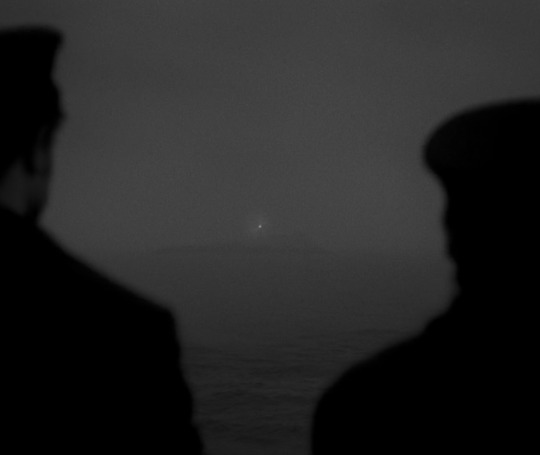
5. The Lighthouse (dir. Robert Eggers)
"Damn ye! Let Neptune strike ye dead Winslow! HAAARK!"
Hyper-masculine mania as told through a wonderful blend of dark comedy and cosmic horror and with some of the most lush black-and-white cinematography maybe ever in a film. Eggers' now trademark devotion to absolute accurate period detail in both visual design and dialogue greatly helps this reach transcendent heights. But it's truly the two performances of Dafoe and Pattinson that help it weave a perfect spiral of insanity that also manages to be so oddly fun. Never could there be any other paring of actors that would perfectly showcase these two dirty sea-dogs going stark raving mad at each other so well.
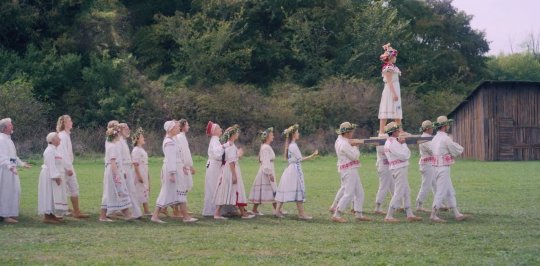
4. Midsommar (dir. Ari Aster)
"As Hårga takes, so Hårga also gives."
(Director's Cut) Every generation deserves their own paranoia-fueled pagan horrorshow, but Aster strikes a much deeper vein in his epic take on the classic territory The Wicker Man had previously claimed. The brutal rituals of the Hårga are only set dressing most of the time, with much more focus poured into the vile toxicity plaguing the relationship between students Dani and Christian. Reynor's Christian is such a perfect portrayal of a terrible influence -- he's charming, fun, and likeable when he's on your side, but the second anybody goes against him his seedy manipulation begins to seep into everything he says. Pugh continues her winning streak too, delivering a broken person desperately trying to put a smile on while falling apart on the inside as she realizes she truly is all alone in the world. While some might be disappointed by the lack of actual "terror" for a good chunk of the movie, Aster has found something much more likely to scar us than these friendly Swedish cultists.
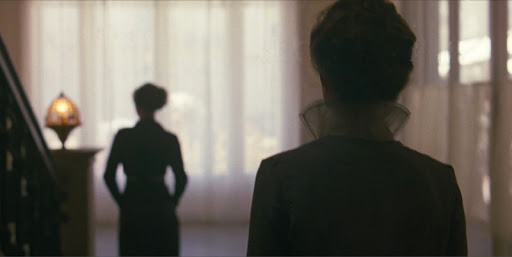
3. Sunset (dir. László Nemes)
"The horror of the world hides behind these infinitely pretty things."
After striking gold with Son of Saul, Laszlo Nemes takes a hard turn into a very different genre but manages to create a wonderfully unique spin on classic detective noir. His signature camerawork powers this yarn, successfully taking the claustrophobic eye of Saul and using it to give a truly immersive sense of place in the tumultuous world of 1913 Budapest, where danger is simmering under the surface and ready to boil over at any moment. After all, noir is always about the eye of the detective, so Nemes' style takes it to a literal degree where everything outside of Irisz' field of vision is incomprehensible. We catch the same shady sideways glances and hushed whispers at the same time she does too. The plotting, like all noir tales, gets a little too complex for its own good, although it's less because of double-crossing and deceit and more from the story slowly dropping its connection to reality to function on a far more allegorical level. But as far as immersive, experiential cinema goes, not even 1917 can stack up to this film's highs, as the enraged lower-class populace eventually comes for the heads of the bourgeoise and Irisz suddenly realizes she is in the very wrong place at the very wrong time.
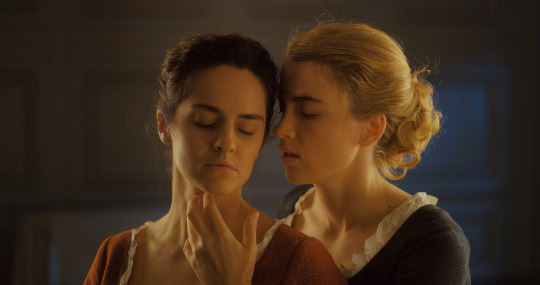
2. Portrait of a Lady on Fire (dir. Céline Sciamma)
"Do all lovers feel they're inventing something?"
An absolutely breathtaking portrait (hehe) of yearning and love, so astonishingly romantic and actually aware of what will make a woman swoon. Every technical aspect is perfect, from the gorgeous locale to the lovely windswept dresses to the soft, classical cinematography. But the true magic comes from Merlant and Haenel perfectly delivering every line of Sciamma's wonderous script. Those two have a sexual tension strong enough to burn down the theater, as their shy glances turn into deep longing stares and both their steely professional reserves give way to poorly suppressed joy at just being able to be with the other. Even their initial terse dialogue melts into pure romantic splendor, as they lovingly catalog all the little gestures the other does when flustered. Their connection during filming was powerful enough to fuel rumors around the two in the press and is currently providing the desire for every thirsty lesbian who finishes this to immediately pull up videos from the press tour and hunt for those same things between the actors themselves. And trust me, they are there.

1. Parasite (dir. Bong Joon-ho)
"Not 'rich but still nice.' Nice because she's rich, you know? Hell, if I had all this money, I'd be nice too!"
Very rarely does a film come along that actually warrants to be described as "perfect", as in one that literally generates no critiques in any way even if I was forced to pick something at gunpoint to complain about. But Parasite truly does every single thing right. Even Bong's tonal whiplash style, which does grate on me at times, somehow fits perfectly here as the schemes become increasingly madcap and the increasing sense that this will all come crashing down horribly mounts ever higher. Until then, it's an absolute joy to watch in every way, as Bong stacks the card deck higher and all the characters dive further into the sewer for their own benefit. The midpoint pivot works wonderfully too, as it goes to show that literally every person is getting played in the world of Parasite. It's massive success is only surprising to those who haven't seen it: it's the perfect movie for the era it came out in and may as well be the watershed moment for a new age of cinema where Hollywood finally admits that it's not the king of the world anymore.
#top 25#2019 in film#parasite#portrait of a lady on fire#sunset#midsommar#lighthouse#fuck capitalism
1 note
·
View note
Video
youtube
One Step for Womanhood, One Giant Leap for White Womankind: Discussions of Intersectionality & the New Doctor Who
Note: before reading my article, please read the article that inspired it, written by @stitchomancy.
Actress Jodie Whitaker has been cast to play the thirteenth iteration of the iconic Doctor Who. In the show’s fifty-plus year run, Whitaker is the first woman to ever be cast as the Doctor. The reaction from fans has been ecstatic. Members of the show’s cast have taken to social media to show their support for Whitaker, and to defend the decision to an expected backlash from male fans of the show.
Colin Baker, the Sixth Doctor, has by far been the most vehement. “Change my dears and not a moment too soon,” he wrote. “[She] IS the Doctor whether you like it or not!”
The casting choice is inarguably an historic one -- but fans of color have understandably expressed some disappointment that the first woman Doctor won’t represent more women.
After decades upon decades of exclusion from most media, the last few years have been a golden age of women protagonists -- from Star War’s Rey and Jyn Erso, to The Hunger Games’ Katniss Everdeen, Mad Max’s Furiosa, and now the riotously successful Wonder Woman, among others. But all these female protagonists have one major thing in common: with very rare exception, they’re all pale-skinned.
The whitewashing of womanhood
Fans of color have pointed this out from the beginning -- that “advancement” for women seems to mean explicitly women who are white. Even as men of color begin to see better integration into the Star Wars franchise, for example, in the form of characters like Finn, Poe Dameron, Bodhi Rook, Cassian Andor, Baze Malbus, and Chirrut Imwe, the only female leads are both white women. (White women who -- it’s worth mentioning -- look startlingly similar.)
Furthermore, when women of color have been introduced to traditional white-male-centric franchises -- such as Star Trek -- or in traditionally white female roles -- such as Iris West in CW’s The Flash, and Mary-Jane in Spiderman: Homecoming -- the backlash against them has largely focused on the preservation of white feminine “purity.” This was the main complaint when Zendaya was announced in the role of Mary-Jane -- fanboys complained that the role had been “ruined” or “appropriated” by a black actress.
White Feminists™ tend to be quieter on this front, often neither decrying or (perhaps more damningly) supporting the rare ascension of women of color to the forefront. But when a white woman is cast in a traditionally male role, the complex feelings of feminist fans of color are often perceived as a betrayal of their feminist values. Women, it seems, are finally getting their due -- why should it matter what the color of their skin might be?
Well, fellow white women, I’m here to say: it matters.
When every casting choice designed to “break the mold” of male dominance in media representation churns out white woman after white woman, that choice ceases to be truly revolutionary. Think about it: how many times can white women with the same hair color, the same eye color, and the same approximate build be cast in a “traditionally male” role or franchise before it becomes old hat? Before casting a snarky brunette becomes a relatively risk-free choice? And, before you answer, let me remind you that this has been done in every one of the following franchises:
Jessica Jones
Agent Carter
Star Wars: The Force Awakens
Rogue One
Mad Max
The Hunger Games
We’re no longer living in the world of Aliens or The Long Kiss Goodnight. Representation for women of all hues is much scarcer than it has any right to be -- but surely we can all agree that white brunette women are getting their time in the sun. And if blondes are feeling left out, I present Exhibit B:
Supergirl
Atomic Blonde
Game of Thrones
Buffy the Vampire Slayer, and now
Doctor Who
White women are getting to see themselves in media more than we ever have before, and while there is always sexist backlash, directors are clearly beginning to feel more confident casting us in leading roles. But when women of color bring attention to the fact that they aren’t being included, white women have a tendency to treat them as enemies, rather than people asking a very reasonable question we’re accustomed to asking ourselves:
“Why not me?”
As a white cisgender woman, I do not feel that my womanhood is any less represented by a woman of color. My experience of being a woman does not go unrepresented. But, in the reverse, a woman of color’s experience of womanhood does go unrepresented when a white woman is in the driver's seat.
White cis women are privileged to experience our womanhood in a sort of vacuum, removed from any other type of oppression we could experience. Our womanhood doesn't intersect with any other type of oppression we could experience -- save, of course for those of us who identify as queer. And even then, our experience is distanced from that of women of color.
When a woman of color comes onscreen, I don't feel like there's anything I've experienced because I'm a woman that she won't represent or faithfully depict. I don't have any concern that she will speak for me in bad faith. But when a white woman comes onscreen, women of color know that their experience as women of color can't be faithfully represented -- and they bear the brunt of the fallout as white women turn on them for not “getting with the program.” It benefits us to ignore the completely reasonable complaints by women of color that they can't depend on white women actresses to depict their experience or represent them -- after all, our ship has come in.
This is the problem with the presumed universality of White Feminism™. It assumes that once problems of representation and visibility are solved for us, they're solved for everyone. It assumes that the way we experience womanhood -- as women first and anything else secondarily -- is true for all women, in spite of the fact that it’s an experience specifically facilitated by our whiteness and our cisness. It is an experience we are privileged to have: that of being women separate from our hegemonic social privilege, it being the sole cause of our misfortune.
That is not to say that white women don’t “deserve” representation in media. We, like all people, benefit immensely from seeing ourselves depicted on the small and silver screen. But, in the words of my favorite superhero, it’s not about deserve. It’s about what you believe. And if you believe that every girl should be able to see herself in that way -- as a leader, and a hero, and as someone permitted to have personality and nuance -- then it’s time to promote the voices of women of color. They should never have to “wait their turn” to be represented.
When the Doctor can be a woman, but not a woman of color, it's time to admit there's a problem -- otherwise, we risk becoming the very people who are decrying the casting of Whitaker on the grounds of her womanhood alone. It's time for white women to uplift our sisters so that they, too, can have what we feel we have always deserved. Women of color deserve to see themselves as someone other than just a companion, too.
5 notes
·
View notes
Note
NICE
@cl4ssyjazzy Just wanted to throw my sheep breed headcannon for this specific piece of art. If both the ram and the ewes have curved horns, and they are white and fluffy, the type of 🐏 we MAY be looking at is a Dorset Horn sheep! Which I quite like because those are in danger of becoming extinct (I don't like this part), so it quite fits the "LAST LAMB" thing (this part I like :D)
*Fires Yurification Beam at Narinder & The Lamb*

i have terrible news they'd look the exact same except now the lamb is balalaika-core ( with a little bit of roberta the maid from black lagoon ) and narinder can officially be given the 'failwife' title
#narilamb#cotl narinder#cotl lamb#admittedly genderbend stuff aint my thang but that's my ' The Gendies ' issue#all that honestly changes is the voices + the lamb's horns are a little more thin#neither of them are cis in their main iteration and neither of them are cis now and i dont know how i'd draw that without feeling WEIRD.#edit: pointed out to me their love is in the yuri way ANYWAY#addition#cult of the lamb#genderbend
525 notes
·
View notes